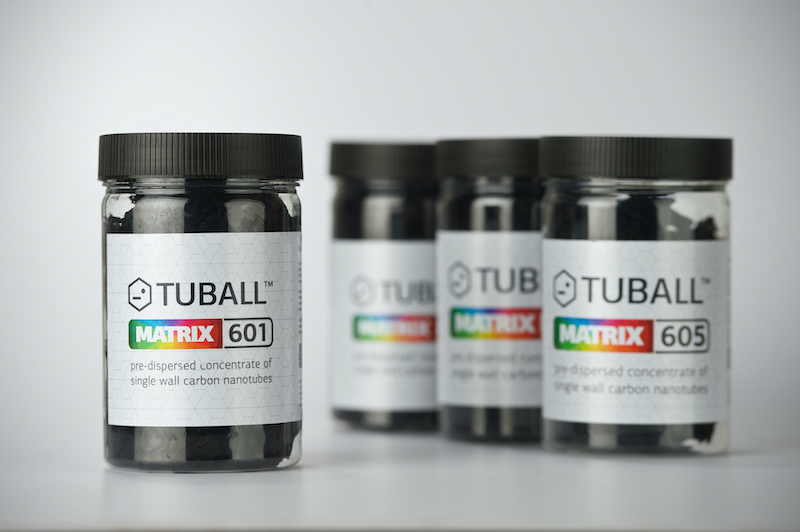- A new conductive silicone enhanced with graphene nanotubes for application in medical devices complies with the EU RoHS Directive.
- Graphene nanotubes allow manufacturers to combine electrical conductivity with the original softness and flexibility of silicone rubber, outperforming other solutions.
- The new compound has been used for serial production of electrical massage treatment devices, capturing great interest on the European market.

Graphene nanotubes are proven as a game changer in the materials industry when an application requires electrically conductive properties. They outperform other conductive materials for silicone rubbers used in skin-contact applications such as carbon black and silver particles. While silver-based additives have unresolved problems with mixing and processing, carbon black leads to skin contamination, as well as to degradation of the properties of silicone that are crucial for healthcare applications, such as flexibility and softness.
The use of graphene nanotubes, also known as single wall carbon nanotubes, allows silicone producers to combine functionality and comfort in materials used in medical devices.
The growing requirements of the electrical massage devices industry resulted in a necessity for conductive silicone rubber that maintains high softness and flexibility. Graphene nanotubes became the solution for a Chinese silicone rubber compound manufacturer. Nanotubes make it possible to pass massage pulses through rubber to the human body, while maintaining the desired original properties of the silicone.
A dosage as low as 0.25% of nanotubes from OCSiAl replaces up to 40% of carbon black in a conductive HCR (high consistency rubber) silicone compound, ensuring stable volume resistivity of <100 Ω•cm. It shows no carbon release to the material’s surface and no contamination of the skin. This tiny dosage of strong, highly electrically conductive, and flexible nanotubes does not impair the silicone’s softness or elasticity, and makes it possible to maintain other mechanical properties. Developed by OCSiAl, industry-friendly forms of nanotube concentrate based on silicone-compatible carriers allow manufacturers to retain standard production processes, which is not achievable when applying silver-based additives.

The new silicone compound is used in the production of a serial line of electrical devices for massage treatment. Compliance of the nanotube compound with the EU RoHS Directive, along with the fact that OCSiAl’s nanotubes are the only single wall carbon nanotubes registered under the European REACH regulation, has allowed the manufacturer to enter the European market and further expand its line of products using the new nanotube silicone compound.
Learn more on graphene nanotubes in silicone rubbers at tuball.com.
